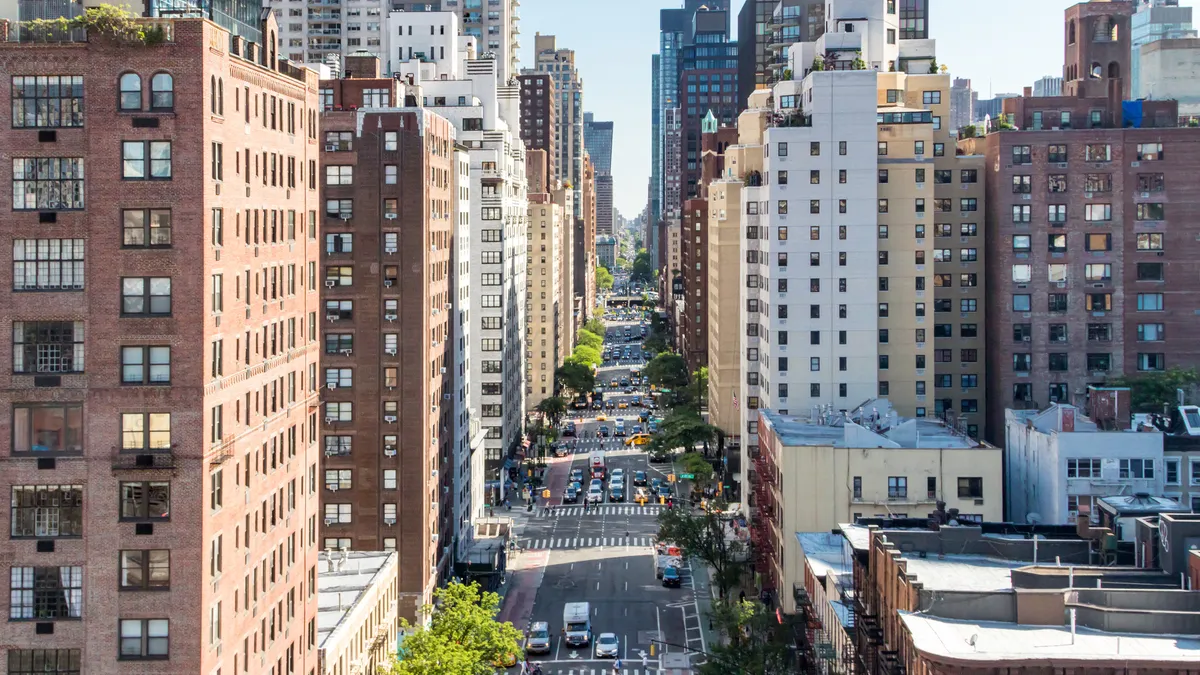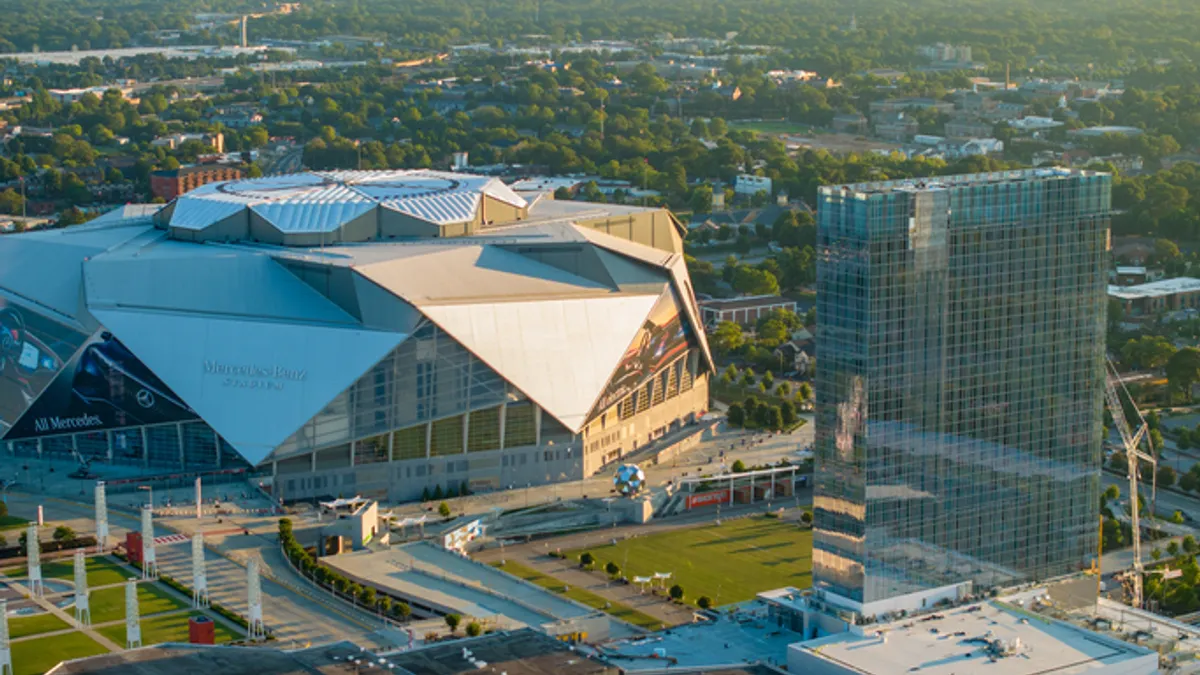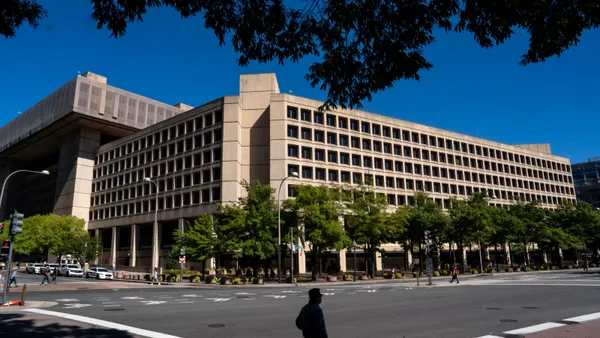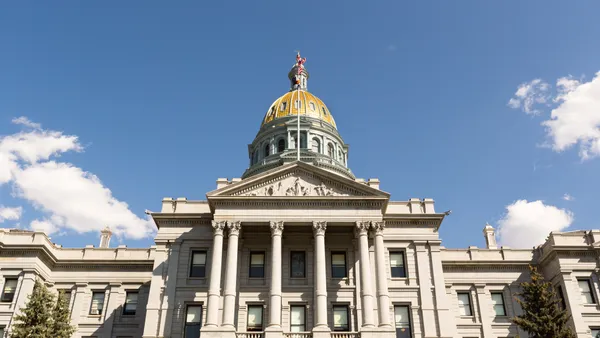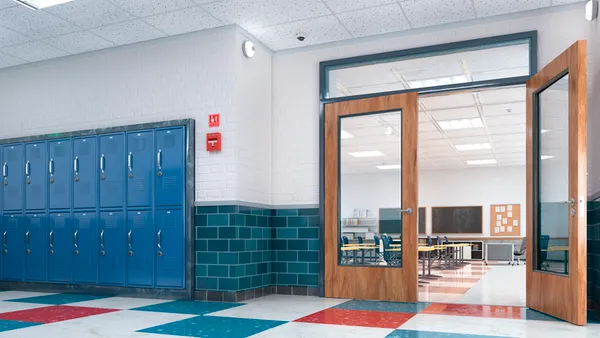A panel of appellate judges from the New York State Supreme Court’s First Department has reinstated a lawsuit contesting New York City’s building emissions law, Local Law 97, which requires buildings over 25,000 square feet to cut 40% of their emissions by 2030 and reach an 80% reduction target by 2040.
The lawsuit was filed by Glen Oaks Village Owners Inc. and others, including a landlord, who argue that LL97 is preempted by New York state’s more comprehensive climate law, the Climate Leadership and Community Protection Act. The CLCPA calls for a scoping plan that includes actions to reduce 40% of economy-wide greenhouse gas emissions by 2030 and 85% of those emissions by 2050, compared with 1990 levels. The scoping plan, released in December 2022 by the state’s Climate Action Council, builds on New York’s clean energy investments, including $6.8 billion to reduce building emissions and $35 billion for 120 large-scale renewable and transmission projects in the state.
The judges’ decision, entered last Thursday, modifies a November 2023 order from Supreme Court Justice J. Machelle Sweeting, which had granted the defendants’ motion to dismiss the four causes of action in the lawsuit related to challenges posed by LL97. The judges stated that the defendants, including New York City, have failed to show that the state’s climate law does not preempt LL97.
The plaintiff’s first cause of action asserts that the CLCPA’s provisions preempt LL97 by indicating an intent to occupy the field of emissions regulation, thus rendering the local law inconsistent with state law.
The defendants, on the other hand, have contended that LL97 is not preempted by CLCPA because its savings clause does not apply to LL97. The CLCPA’s savings clause states that the act does not relieve any person of compliance with other applicable laws, including local laws for protecting public health or the environment.
The judges denied the motion to dismiss the first cause of action, which argues the city’s law is preempted by CLCPA, but upheld the dismissal of the second through fourth causes of action, which allege that the law violates the due process clauses of the U.S. and New York State constitutions.
Amid ongoing legal debates over the regulation of greenhouse gas emissions at the local level and the extent to which state laws preempt local ordinances in this area, the reinstatement of the lawsuit suggests the court sees merit in the argument that LL97 may conflict with the state’s overarching climate goals outlined in the CLCPA.
The appellate division’s determination is a “significant and potentially troublesome development in the course of LL97 implementation, but it is not the end of the story,” Noah Shaw, partner at law firm Foley Hoag’s energy and climate practice, told Facilities Dive. “LL97 remains in effect, and the trial-level court will continue to hear the matter. Nevertheless, this latest decision may spook investors and others [who are] planning around upcoming LL97 compliance requirements.”
Shaw, who previously served as general counsel at the New York State Energy Research and Development Authority, added, “The state legislature may determine at some point to amend the CLCPA to expressly allow for the Local Law 97 compliance program in which case the matter would be resolved.”



